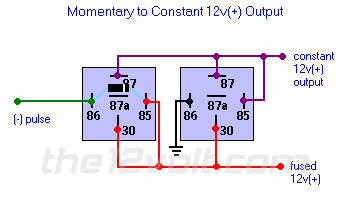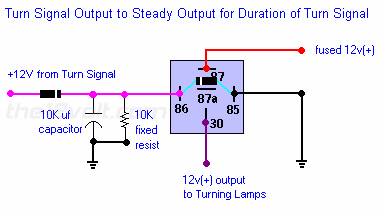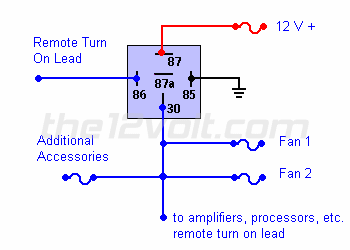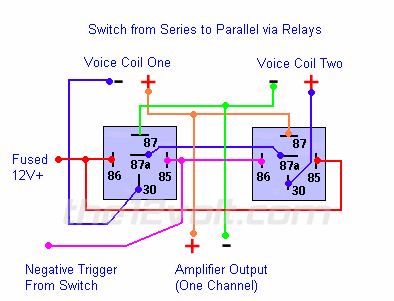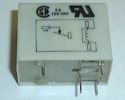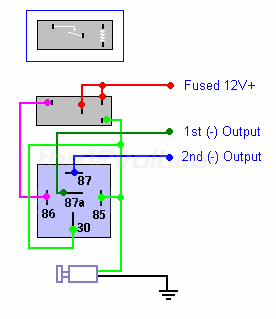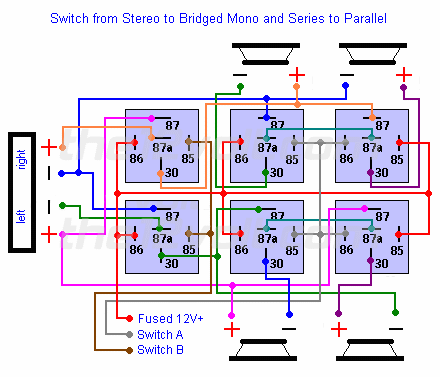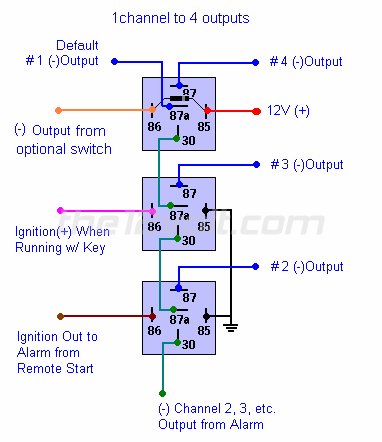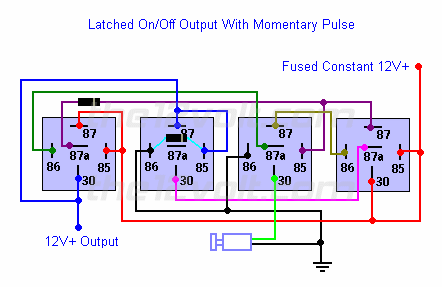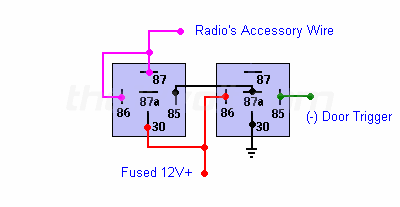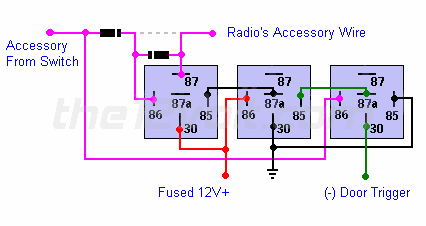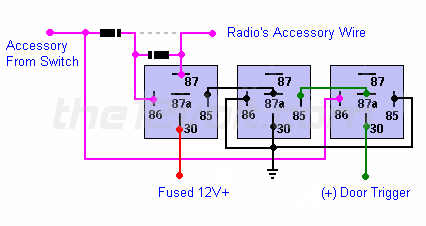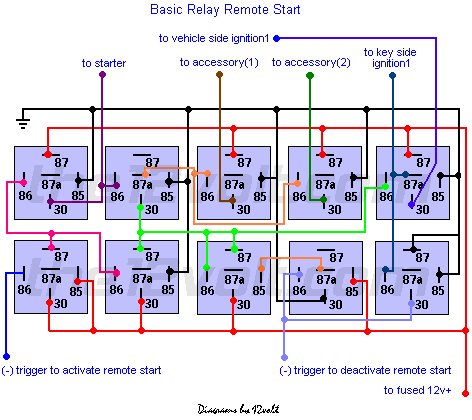Relay
| Constant to Momentary Output |
| The capacitor allows the coil of the relay to be energized until the capacitor stores a charge, thus de-energizing the coil. The resistor bleeds off the charge of the capacitor when positive voltage is removed from the other side of the coil. You can increase the output time by simply changing the value of the capacitor. This one will give you about a 1/2 second output. 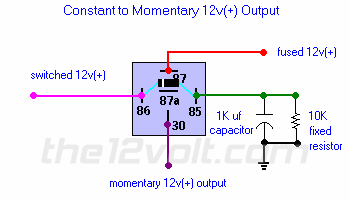 |
|
|
|
|
|
|
|
|
|
|
Sumber : www.the12volt.com

